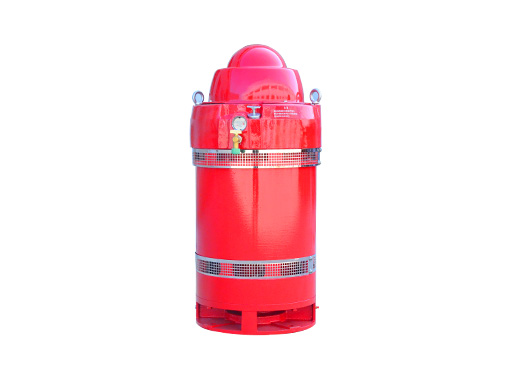
Fire pump motors are the driving force behind fire pumps, providing the power necessary to deliver water during emergencies. Choosing the right motor and maintaining it properly is essential for a reliable fire protection system. Here’s everything you need to know about fire pump motors:
There are two primary types of motors used in fire pump systems:
Electric Motors: Powered by electricity, these are efficient, reliable, and suitable for areas with a stable power supply.
Diesel Engines: Ideal for locations where electric power may be unreliable, these engines offer independence and robustness.
Fire pump motors must adhere to standards such as NFPA 20, UL, and FM. These standards ensure the motors meet safety and performance benchmarks, making them suitable for emergency applications.
Proper sizing is critical to ensure the motor can handle the fire pump’s operational demands. An undersized motor may overheat, while an oversized motor can lead to inefficiencies and unnecessary costs.
Fire pump motors often include one of the following starting methods:
Across-the-Line Starter: Provides full power instantly.
Soft Starter: Gradually increases voltage to reduce electrical and mechanical stress.
Variable Frequency Drive (VFD): Adjusts motor speed for optimal performance and energy efficiency.
For electric motors, a reliable secondary power source, such as a generator, ensures operation during power outages. Diesel engines inherently provide a standalone power solution.
Motors must be designed to withstand their operating environment. For instance, motors in humid or corrosive environments should have protective coatings and be built with corrosion-resistant materials.
Motors equipped with thermal protection systems can prevent damage caused by overheating, enhancing reliability and lifespan.
High-efficiency motors reduce operational costs and environmental impact while maintaining robust performance. Look for motors with energy certifications when available.
Low-noise and vibration-resistant motors improve safety and comfort in facilities where fire pumps are installed.
Regular inspections, lubrication, and testing are crucial for keeping fire pump motors in optimal condition. Preventive maintenance helps identify potential issues before they lead to failures.
Periodic testing ensures motors perform as expected. Common tests include:
No-Load Test: Verifies the motor’s functionality without load.
Full-Load Test: Ensures the motor can handle its operational capacity.
Power Supply Issues: Voltage fluctuations can affect motor performance.
Environmental Damage: Exposure to dust, moisture, or chemicals can degrade motor components.
Improper Maintenance: Skipping regular maintenance can lead to costly repairs or system failures.
Choose a motor from a reputable manufacturer known for quality, performance, and support. Strong after-sales service is invaluable for addressing issues and obtaining spare parts.
Fire pump motors must work seamlessly with controllers to ensure automatic start/stop and real-time monitoring. Compatibility with modern fire protection systems is a must.
Ultimately, fire pump motors must deliver reliable performance during emergencies. Ensure your motor is tested, maintained, and ready to operate at a moment’s notice.
Fire pump motors are a critical component of fire protection systems, ensuring the delivery of water during emergencies. By understanding their types, features, and maintenance requirements, you can ensure your fire pump motor operates reliably when it’s needed most. For more information on fire pump motors, feel free to contact our team or visit our website.